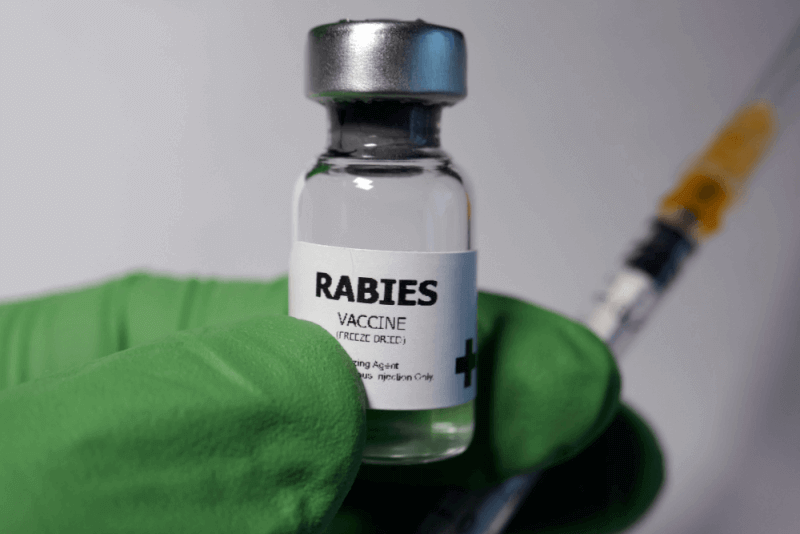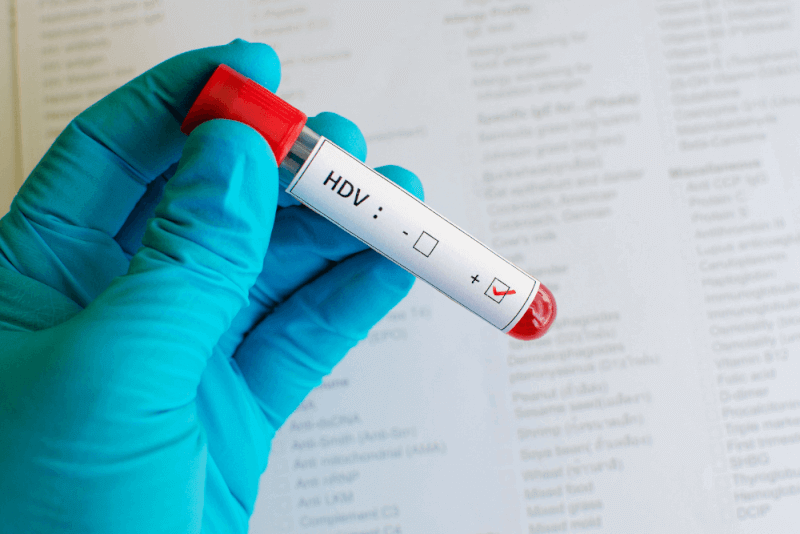What is Rabies?
Rabies is a disease transmitted through direct contact with the saliva or brain and nervous system tissue of an animal infected with the rabies virus, known as RABV. Although fatal, rabies is preventable. It can be transmitted to humans and pets through the bite or scratch of a rabid animal.
The rabies virus is usually transmitted through the saliva of an infected animal. Typically spread through animal bites, the rabies virus moves slowly along the nerves towards the central nervous system. Once the virus reaches the brain, it causes damage that leads to neurological problems, eventually resulting in coma and death.
The rabies virus is found on every continent except Antarctica but is most commonly seen in rural areas of Asia and Africa. In many countries, dogs carry the rabies virus. Children are more likely to contract rabies than adults.
Stages of Rabies
Rabies progresses from an infected wound to the brain over time. Most people go through several stages. These stages include:
Incubation Period
The rabies virus can stay in the body for days or even weeks before entering the nervous system. During this time, no symptoms are observed. If treated at the beginning of the incubation period, rabies can be prevented.
Prodromal Stage
During this stage, the rabies virus progresses through the nerve cells to the brain and spinal cord, causing nerve damage. The prodromal stage begins when the rabies virus enters the nervous system. It causes flu-like symptoms as the immune system attempts to fight the virus. Nerve damage can cause tingling, pain, or numbness at the bite site. Once rabies reaches this stage, there is no effective treatment.
Acute Neurological Phase
In this stage, the rabies virus starts damaging the brain and spinal cord. Severe rabies disease, with symptoms like aggression, seizures, and delirium, occurs in about two-thirds of people. Others may experience weakness and paralysis spreading from the bite area to other parts of the body due to paralytic rabies. The furious form of rabies can last up to a week, while the paralytic form can continue for up to a month.
Coma
In the final stage of rabies infection, many patients enter a coma. Rabies ultimately leads to death.
Causes of Rabies
The RABV virus causes rabies disease in humans and animals. It travels through the nervous system, causing damage until it reaches the brain, where it causes brain damage and leads to death.
The reason rabies cannot be treated once it reaches the brain is that the virus is protected by the blood-brain barrier, which cannot be penetrated by any medication or vaccine.
Symptoms of Rabies
After the rabies virus enters the body, no symptoms are typically observed for several weeks. When rabies reaches the central nervous system, flu-like symptoms appear. In the final stage, neurological symptoms begin to emerge.
Prodromal Symptoms of Rabies
Symptoms that may appear when rabies reaches the central nervous system include:
- Diarrhea
- Fever
- Nausea and vomiting
- Fatigue
- Muscle pain
- Sore throat
- Cough
- Burning, itching, tingling, pain, or numbness at the bite wound
Acute Neurological Symptoms of Rabies
Neurological symptoms of rabies can be either furious or paralytic. Symptoms of furious rabies include periods of calmness alternating with agitation. Symptoms of furious rabies include:
- Agitation and aggression
- Facial paralysis
- Restlessness
- Different-sized pupils
- Seizures
- Excessive salivation
- Hallucinations
- Rapid breathing
- Muscle twitching
- Increased heart rate
- Fever
- Hydrophobia
- Delirium
- Aerophobia
Symptoms of paralytic rabies include:
- Fever
- Headache
- Neck stiffness
- Weakness spreading from the bite area to other parts of the body
- Tingling
- Paralysis
- Coma
Diagnosis of Rabies
Unlike many other diseases, rabies must be diagnosed before symptoms appear. If a person is bitten or scratched by a wild animal or a pet that may be rabid, they should immediately seek medical attention. The wound is examined, and various questions are asked to determine if rabies treatment is necessary. Testing for rabies symptoms is also possible. If rabies is suspected, the patient should be monitored for symptoms or tested if possible. Animals may need to be euthanized for testing.
Tests to diagnose rabies include:
- Saliva test
- Skin biopsy
- Lumbar puncture
- Blood tests
- MRI
Rabies Treatment (Vaccine)
There is no approved treatment for rabies. Therefore, if exposed to rabies, it is crucial to seek medical attention as soon as possible. The wound should be cleaned thoroughly with soap and water, and vaccines should be administered to prevent the virus from causing rabies. For individuals who have never received a rabies vaccine, antibody treatment is applied directly to the wound. Post-exposure prophylaxis is administered after rabies exposure to prevent the infection from reaching the brain. Two different medications are used in rabies treatment, and they are generally combined.
- A four-dose vaccine administered over 14 days is recommended for individuals who have never received a rabies vaccine. Those who have previously been vaccinated for rabies receive two doses. The vaccine teaches the body how to eliminate the rabies virus before it reaches the brain.
- Human rabies immune globulin is injected around the wound to eliminate the virus near the wound. This injection contains antibodies that help eliminate the virus. If vaccinated before exposure, this medication is not necessary.
Side Effects of the Rabies Vaccine
The rabies vaccine can cause mild side effects, including:
- Dizziness
- Muscle pain
- Headache
- Nausea
- Pain, itching, or swelling at the injection site
Which Animals Can Transmit Rabies?
The rabies virus is carried by warm-blooded animals. Known as mammals, these animals' saliva can easily transmit the virus through bites. Rabies is commonly found in bats, raccoons, skunks, and foxes. However, other animals, including domestic dogs and cats, can also be infected. Rarely, rabies cases have been reported after receiving organs from infected humans.
How is Rabies Transmitted?
Rabies is transmitted through the saliva of an infected animal. Even a small amount of saliva entering a skin break can cause the virus to spread throughout the body. Therefore, animal bites are the most common way rabies is spread.
Types of Rabies
Rabies is primarily divided into two types:
Paralytic Rabies
In paralytic rabies, the virus causes paralysis and coma. This form of rabies occurs in 20% of human cases and is often misdiagnosed. Symptoms include muscle paralysis starting at the bite or scratch site. People with paralytic rabies gradually fall into a coma and eventually die.
Furious Rabies
Furious rabies causes hyperactivity and hallucinations. Hydrophobia, a symptom closely associated with rabies, occurs in furious rabies. The factor leading to death in furious rabies is cardiac or respiratory arrest.








